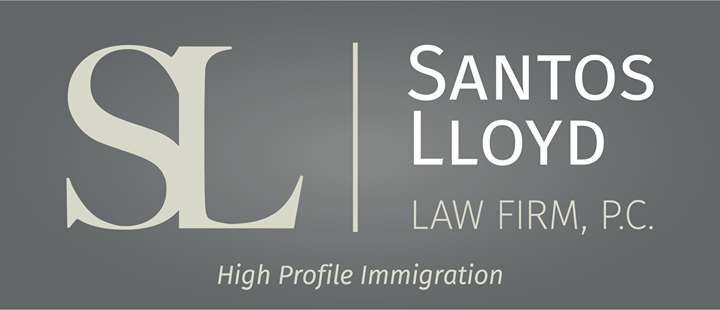¿Cuáles son las dos formas en que puede solicitar asilo?
April Perez • February 17, 2023
Click here to read this article in English
El asilo es una solicitud que le permite a una persona permanecer en los Estados Unidos en lugar de ser expulsado o tener que regresar a su país de origen donde teme ser perseguido o sufrir daños. Una solicitud de asilo se puede presentar de dos maneras.
Asilo afirmativo
Una solicitud afirmativa de asilo puede ser presentada por alguien que no está en proceso de deportación (tribunal de inmigración). La persona puede presentar su solicitud y evidencia en la oficina de asilo que corresponda al área donde vive. Una vez que la persona esté programada para una entrevista, la entrevista se llevará a cabo en la oficina de asilo con un oficial de la USCIS. Si la persona tiene un abogado, su abogado también puede estar presente en la entrevista junto con un traductor si es necesario. El solicitante será puesto bajo juramento y el oficial hará preguntas sobre la solicitud para confirmar y actualizar la información en la solicitud. El oficial también hará preguntas sobre la persecución que sufrió el individuo en su país de origen. La decisión se suele dar por correo, o deberá ser recogida en persona por el solicitante en la oficina de asilo en la fecha y hora designada por el oficial. Si el caso es denegado y el solicitante no está en estatus, él o ella será remitido a la corte de inmigración y tendrá la oportunidad de presentar su caso ante el juez de inmigración. Si la persona todavía está en el estado, puede continuar en este.
Asilo defensivo
Una solicitud defensiva de asilo es solicitada por una persona que ya se encuentra en un proceso judicial de deportación o inmigración. La persona ha sido referida a la corte cuando recibió un Aviso de comparecencia, o se entregó en la frontera y solicitó asilo. La solicitud y las pruebas se presentan ante el tribunal y una vez que se programe la audiencia de méritos o la audiencia individual (última audiencia), el solicitante tendrá la oportunidad de declarar sobre la persecución sufrida en su país de origen. El juez dará una decisión al final de la audiencia o emitirá una decisión por escrito que se recibirá por correo en una fecha posterior. Si se niega el caso, el solicitante puede apelar su caso ante la Junta de Apelaciones de Inmigración (BIA), de lo contrario, deberá seguir las instrucciones de la decisión del juez con respecto a su expulsión.
Si cree que puede calificar para asilo, no dude en comunicarse con nuestra oficina.
Este blog no pretende constituir una asesoría legal y nada aquí debe interpretarse como el establecimiento de una relación abogado-cliente. Programe una consulta con un abogado de inmigración antes de tomar acción basándose en cualquier información que lea aquí.
Similar Posts

As of April 1, 2024, USCIS has instituted an inflation adjustment to immigration application filing fees . These fee increases apply to a majority of the different application types, including family-based, non-immigrant, and immigrant petitions. As a part of these fee increases, USCIS has also instituted a new program designed to provide funding to the United States’ Asylum Program, in order to better address the massive backlog of pending asylum claims currently waiting to be adjudicated. Unfortunately, these changes have led to confusion among petitioners for when they are required to pay the Asylum Program Fee, and when they may qualify for a 50% or complete exemption from the fee. The Asylum Program Fee is required to be submitted by employers in all I-129 and I-140 petitions filed on or after April 1, 2024. The Asylum Program Fee is $600, however, certain exemptions apply . Small employers , defined as having 25 or fewer total employees, qualify for a reduction of the Asylum Program Fee, but are still required to submit a reduced fee of $300. Individual petitioners, or self-petitions, such as in the case of an EB-2 National Interest Waiver, are considered small employers for the purpose of the Asylum Program Fee and are also required to submit the reduced $300 fee. Non-profit organizations are exempted from the Asylum Program fee and are not required to submit any additional funds with the ordinary I-129 or I-140 filing fee. In addition, non-profits qualify for a 50% reduction of the ordinary filing fee in certain types of applications, bringing the overall filing fee burden down substantially for non-profit organizations. With these changes to USCIS’ filing fee schedule, USCIS is hoping for significant improvements to efficiency and processing for pending asylum applicants. If you or your petitioning organization need any assistance in preparing an application for an immigration benefit, including ensuring proper compliance with the new fee requirements, our office is ready and waiting to help!

In recent months, the U.S. government has intensified its vetting procedures for individuals seeking entry into the United States, whether through visa applications abroad or inspection at ports of entry. This shift, prioritized by the current administration, is having a noticeable impact on immigrants, visa holders, and even lawful permanent residents (LPRs). At U.S. consulates worldwide, applicants are experiencing increased delays , often being placed into administrative processing under Section 221(g) or referred for Security Advisory Opinions (SAOs) , which can significantly prolong visa issuance. Officers are now engaging in deeper reviews of applicants' backgrounds, including their t ravel histories, social media accounts, and foreign ties . This scrutiny applies to a wide range of visa categories, from visitor visas to employment-based petitions. Importantly, officers are exercising broader discretion when deciding who qualifies for a visa, making the process more unpredictable, even for applicants with strong cases. This enhanced vetting does not end at the consulate. Individuals entering the U.S. — even those with valid visas or green cards — are increasingly subject to prolonged secondary inspections by Customs and Border Protection (CBP). Officers may ask detailed questions about prior immigration history, travel patterns, and social media activity. In some cases, travelers are asked to provide access to their electronic devices for further inspection. There are also growing reports of travelers being referred to deferred inspection or even issued a Notice to Appear (NTA) for removal proceedings, despite previously lawful entries. While some of these practices have existed in the past, the current administration has formalized and expanded them. Experts warn that additional travel restrictions or targeted bans could also emerge as part of the administration’s enforcement priorities. For employment-based applicants, these delays and complications can severely impact U.S. businesses and foreign nationals who contribute critical skills to the U.S. economy. It is more important than ever to be well-prepared before attending a visa interview or traveling internationally. Understanding your rights and preparing thoroughly can help you navigate this uncertain landscape. At Santos Lloyd Law Firm, P.C. , our immigration attorneys are ready to guide you through this evolving process and ensure you are informed, supported, and protected. Please contact us if you have questions or need assistance.

On March 31, 2024, U.S. Citizenship and Immigration Services (USCIS) implemented a policy update that limits gender marker selections on all immigration forms and systems to two biological sexes: male and female. This change eliminates the option for applicants to select a non-binary or “X” gender marker—an option that had previously been permitted on some forms. While USCIS emphasizes that this update does not change who qualifies for immigration benefits, it may significantly impact how certain applications—particularly asylum claims based on gender identity-related persecution—are understood and evaluated. What Has Changed? Under the revised policy, applicants may now only choose “Male” or “Female” when completing USCIS forms. The ability to select a non-binary or third-gender option is no longer available. Applicants may still request to change their gender marker with USCIS, but only within the male/female binary. Supporting documentation, such as medical or legal records, is not required to make the change. This means that transgender individuals can still align their gender marker with their identity—if it falls within the two binary categories—but non-binary individuals are no longer represented. The change follows guidance issued by the federal Office of Management and Budget (OMB), which called for greater consistency in the collection of sex and gender data across federal agencies. Impact on Asylum Applicants This policy update is especially important for individuals applying for asylum based on persecution related to their gender identity. Under U.S. immigration law, asylum is available to people who have suffered persecution—or fear future persecution—based on their membership in a “particular social group.” This includes people targeted for being transgender, gender non-conforming, or otherwise not aligning with socially expected gender roles in their home country. Although the legal standard for asylum remains unchanged, the removal of the non-binary gender marker could make it harder for some applicants to clearly present and document their identity. In asylum cases, credibility and clarity are crucial. The ability to accurately reflect one’s gender identity on official forms can play an important role in establishing the foundation of a persecution claim. Now, applicants who identify as non-binary or outside the traditional male/female categories may be forced to select a gender that does not align with their lived experience. This could lead to confusion in their case file or require additional explanation during interviews or hearings. This policy could weaken the strength of some asylum claims—not because the underlying facts have changed, but because the official forms now fail to reflect the applicant’s true identity. For example: A non-binary person applying for asylum after being targeted in their home country may now have to select “Male” or “Female” on their asylum application, despite not identifying as either. This mismatch may lead adjudicators to question the applicant’s identity, possibly weakening the strength of the claim or requiring added clarification and documentation. In defensive asylum cases—where applicants are in removal proceedings—such inconsistencies could create unnecessary hurdles and complicate the evidentiary presentation. What Can Applicants Do? Despite the change, individuals can still pursue asylum based on gender identity. The underlying eligibility criteria remain the same. However, applicants should be prepared to clearly explain any differences between their stated identity and the gender marker required on USCIS forms. Applicants are encouraged to: Include a personal declaration explaining their gender identity in detail and how it relates to their fear of persecution. Provide evidence such as affidavits, country condition reports, or expert testimony that supports the claim. Work with an experienced immigration attorney who can help present the claim effectively and prepare for any questions that might arise from the new form limitations. The new USCIS policy on gender markers may seem like a technical update, but for asylum seekers fleeing gender-based persecution, it has real implications. While individuals are still legally eligible to seek protection, the limitation to binary gender options could make it more difficult to fully and clearly present their case. If you or someone you know is facing immigration challenges related to gender identity—or is concerned about how this policy may impact an asylum claim—please contact Santos Lloyd Law Firm to schedule a consultation with one of our experienced immigration attorneys. We’re here to help ensure your voice is heard and your case is handled with the care and expertise it deserves.

In 2025, the immigration landscape continues to shift under the weight of national security concerns, ushered in by Executive Order “ Protecting the United States From Foreign Terrorists and Other National Security and Public Safety Threats. ” This directive tasks federal agencies—including the U.S. Department of State—with implementing enhanced screening and vetting protocols for all foreign nationals seeking visas or other immigration benefits. The result? A dramatically intensified vetting process, along with mounting concerns from immigrants, attorneys, and civil liberties advocates alike. Traditionally, airport security focused on verifying travel documents and screening for prohibited items, while consular officers assessed the legitimacy of visa petitions and the admissibility of applicants. Extreme vetting, however, represents a significant shift toward a far more invasive and comprehensive investigative process. It now includes detailed background checks, biometric verification, digital forensics, and expansive scrutiny of an applicant’s online presence and criminal or financial records. Since President Trump’s second term began in January 2025, the implementation of extreme vetting has expanded rapidly. Today, border screenings go far beyond routine document checks, encompassing a full-scale evaluation of a traveler’s digital life. This pivot reflects the administration’s intensified focus on national security, but it has also triggered urgent discussions about privacy, due process, and the fairness of modern immigration enforcement. At U.S. ports of entry—especially airports—noncitizens are now subject to rigorous and invasive procedures, including: Inspection of cell phones, laptops, and other devices (including deleted content) Review of social media activity on platforms like TikTok, Instagram, and X (formerly Twitter) Biometric scanning, including fingerprinting and facial recognition These measures are no longer confined to travelers from high-risk countries. In practice, extreme vetting applies broadly across all nationalities, and increasingly affects lawful permanent residents as well. For noncitizens, this new landscape introduces a heightened level of uncertainty and vulnerability. Delays at U.S. consulates for visa issuance or renewal are becoming routine. Travelers must now be acutely aware of these changes, and those attending consular interviews or seeking visa renewals should be prepared to provide additional documentation verifying their maintenance of status, compliance with visa conditions, and the bona fide nature of their visa applications. It is critical to organize supporting materials in advance and be ready to answer questions about employment, education, travel history, and online activity. As the U.S. government continues to expand its use of data-driven risk assessment tools, travelers must adapt to a new normal, one where preparation is essential to navigating the immigration system without disruption.




